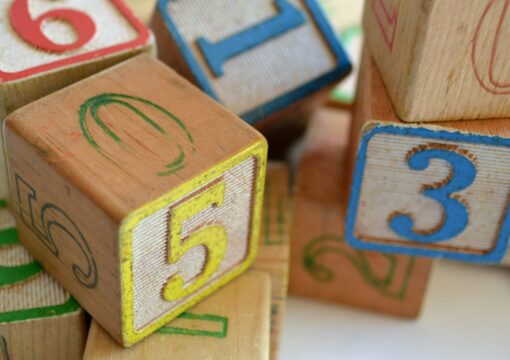A balance sheet is a financial statement that reports a business’s assets, liabilities and equity at a specific point in time (usually at year-end). Simply, it provides a snapshot of what a business owns and owes, alongside the amount invested by shareholders.
A balance sheet can demonstrate the financial health of a business, as well as management approach and organisational structure. This includes information on currently available cash, the liquidity (ease to convert to cash) of assets, or the extent of debt and gearing.
The balance sheet is usually used alongside other financial statements, such as the profit and loss and cashflow statement.
As the name suggests, a balance sheet needs to balance. Equity will always be the net of assets and liabilities, as described by the formula here:
Assets – Liabilities = Equity
or
Assets = Liabilities + Equity
By considering assets as everything a business owns, either borrowing money (liabilities) or investment (equity) is required to purchase them.
If assets don’t equal liabilities plus equity, then there’s missing information, still to be incorporated into your balance sheet.
This article will cover how to set out a balance sheet, what information it could contain, as well as exploring how best to use it…
Who needs a balance sheet?
Preparing a balance sheet is not a legal requirement for all organisations; some might be eligible to file accounts with less information contained. Statutory or not, preparing these statements can aid effective decision making.
The benefit of bookkeeping software such as QuickBooks, Xero or Sage is that a balance sheet report can be generated straight from the system. When accountants prepare statutory accounts or audit larger entities, they want to determine the legitimacy of the assets and liabilities.
Assets
An asset is something of value your business owns, recorded as a ‘debit’ or a positive number in the balance sheet.
Different types of asset are listed from top to bottom in order of increasing liquidity (ability to convert to cash). Current assets can be converted into cash within 12 months or less; long-term assets cannot.
Current assets might include:
- Inventory/stock/work-in-progress – Goods available for sale or services completed, valued at the lower of cost and what the goods or services could be sold for
- Accounts receivable – Money customers owe your business
- Prepaid expenses – Expenses paid in the current period such as insurance, contracts, or rent that relate to future periods
- Investments – Equities (shares) and debt (bonds, bills) held that can be quickly converted to cash
- Cash and cash equivalents
Long-term assets might include:
- Tangible fixed assets – Tangible assets, such as land, machinery, equipment, or buildings
- Intangible assets – Non-physical assets that tend to be listed on the balance sheet when acquired (rather than developed in-house), such as goodwill or patents
Depreciation (or amortisation) is calculated and deducted from most long-term assets. This gradually reduces the value of the asset over its useful life.
Liabilities
A liability is money or obligations your business owes to an outside party, recorded as a ‘credit’ or negative balance.
Current liabilities are due in one year or less; long-term liabilities are due any time after one year.
Current liability accounts might include:
- Accounts payable – Money your business owes from invoices received, often owed within 30-60 days of the invoice date
- Employees’ salary and benefits still to pay
- Current portion of long-term debt/loans and related interest – Due within the next year
- Customer prepayments – Money received from a customer/business before the service/product is delivered
- Accruals – expenditure incurred, before the supplier has invoiced you
- Taxation and social security – The VAT, Corporation Tax, or employment taxes the business owes
Long-term liabilities might include:
- Long-term loans and related interest
- Deferred tax – Taxes accrued, but not due for over a year
Equity
Equity is what remains when you subtract liabilities from assets, in other words, a business’s net worth. It represents both what the shareholders have invested into the business (share capital in a company) and what funds (accumulated profits) are available to them.
On a balance sheet, equity will be recorded beneath liabilities.
Equities might include:
- Ordinary shares – Share of business ownership, where value is affected by organisational performance
- Preference shares – Shares where the holder has a higher claim to dividends or asset distribution than common stockholders
- Retained earnings – Net income after the business has paid out dividends to its shareholders
- Treasury stock – Shares a business has repurchased and held for its own use
- Share premium – The price paid for shares in a business above their nominal value
What can a balance sheet tell you?
A balance sheet is a snapshot of a business’s financial situation at a certain point in time; it is only useful for some purposes. Whilst a single balance sheet does account for long-term assets and liabilities, it’s less useful for identifying trends over a period, unlike a profit and loss statement. Therefore, it can be productive to analyse both reports together, or assess multiple balance sheets from different points in time.
One function of a balance sheet is to display the value of a business to secure capital. Businesses must generally provide a balance sheet to a lender to obtain a loan, or to an investor for private equity funding. This is because the external party (offering the money) wants to understand the financial health and credit position of the business to ensure their money will be secure.
Ratios of certain numbers in the balance sheet are often calculated internally and by investors to set boundaries and targets, so they can understand the figures more deeply. Ratios often focus on liquidity, working capital, inventory and leverage.
Note: some aspects on a balance sheet could be subject to professional judgement, as necessary estimates have been used to fill the gaps. For example, some accounts receivable might be paid or late (or not arrive at all), but the assumption is they will be paid on time.
Need some guidance?
Extracting useful information from a balance sheet can seem daunting, not just in calculating the relevant ratios but understanding what they are actually telling you. Nevertheless, the information they contain is vital for effective decision-making. Consequently, you may wish to seek the advice of an accountant for a more insightful perspective on your business’s finances.
At Burton Sweet, we can assist with producing, interpreting and taking action from your business’s balance sheet statements.
Please contact us and member of our team will be happy to assist you.







